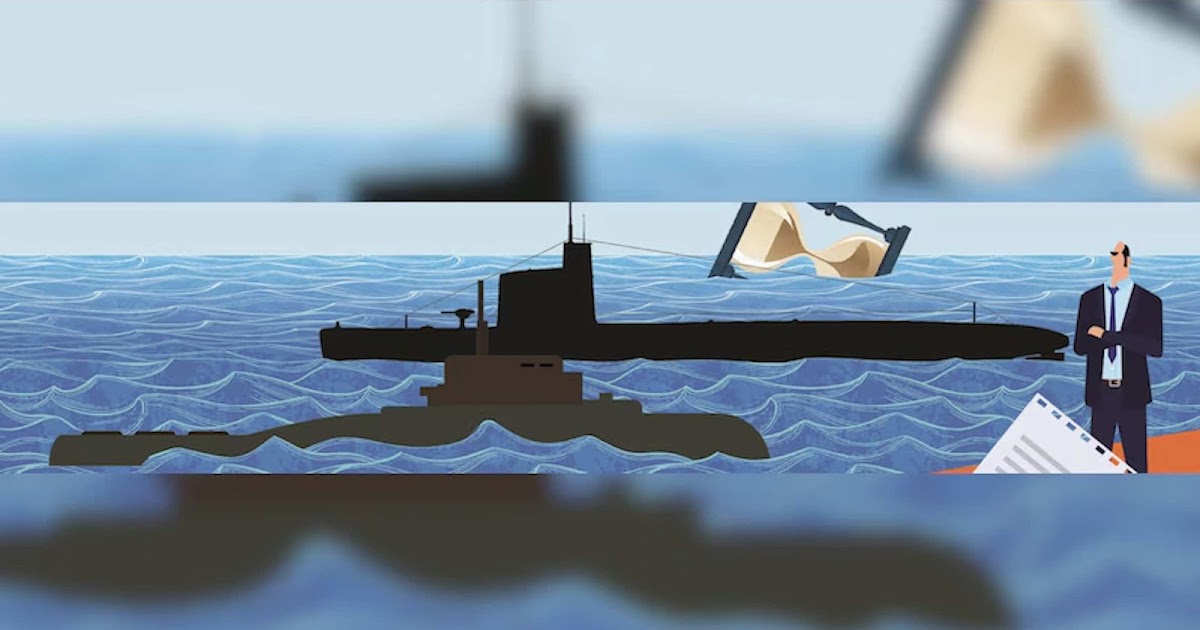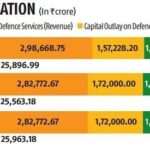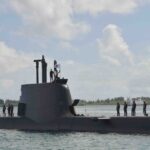
By Vikas Gupta
Defence News of India, 3rd May 24
One of India’s most critically delayed military acquisitions is the “30-Year Submarine Building Plan,” which the Cabinet cleared in 1999 to create a fleet of 24 conventionally-powered submarines. Operating in concert with the navy’s long-range maritime patrol (LRMP) aircraft, these would deny hostile submarines the freedom to range unchallenged in the Arabian Sea, Bay of Bengal and the northern Indian Ocean.
The 30-year plan envisioned building six conventional boats (the traditional naval appellation for submarines) in India to a western design – presumably French, German or Swedish. Another six would follow, based on an eastern design – most likely Russian, South Korean or Japanese. Having accumulated expertise from both the west and the east, Indian shipyards would design and build the next 12 submarines indigenously.
Separately, in another top-secret initiative, navy and Defence R&D Organisation (DRDO) designers would build a small fleet of nuclear-powered attack submarines (SSNs) as well as nuclear-powered submarines armed with nuclear-tipped ballistic missiles (SSBNs). The SSNs, with their ability to remain submerged for weeks, even months, would be capable of conventional missions at long ranges and the Indian Navy has twice leased SSNs from Russia in order to develop the capability to operate them. The nuclear armed and propelled SSBN fleet would not go into battle against enemy submarines and warships. Instead, they would constitute the underwater leg of the nuclear triad – India’s nuclear deterrent.
A quarter of a century has elapsed since this shiny new submarine plan was finalised, but not even Project 75 – construction of the first six submarines – has been completed. And with Project 75-India (abbreviation: Project -75I) still to be tendered, building 18 submarines in the remaining five years is beyond the realm of possibility.
Complicating India’s decision-making in submarine acquisitions are the peculiar hydrological conditions that prevail in the waters around our shorelines. We have a coastline of 5,600 kilometres, another 1,800 kilometres of island territories, and 2.37 million square kilometres of Exclusive Economic Zone (EEZ). Two-thirds of the world’s trade passes through these waters, including oil and gas from the Strait of Hormuz, and commodities and hydrocarbons transiting through the Suez Canal. Passage between the Indian Ocean and the Pacific must pass through the straits of Malacca, Sunda, Lombok and Ombai Wetar, providing opportunities for a blockade of this shipping.
If peninsular India was flanked on both sides by shallow waters, our navy could have made do with conventional submarines. The Arabian Sea gradient is so gentle that, 40 knots offshore from Karachi, the seabed is just 40 metres deep, offering little maneuver space for large submarines. Nuclear-powered, 4,000-tonne SSNs and the larger conventional boats cannot operate close to the Karachi coastline, where the seabed slopes down very gently into the Arabian Sea. India’s eastern coastline, in contrast, slopes down sharply into the Bay of Bengal, making it suitable for operations by large, conventional boats as well as nuclear powered SSNs that require only a short transit to the Malacca Strait, where they can lie in ambush for extended periods. This is a job for nuclear-powered submarines, which are constrained only by human endurance and by food supplies. A nuclear-propelled SSN is also better equipped to form part of an aircraft carrier battle group (CBG), providing a protective screen against enemy submarines. Given India’s hydrological constraints, as well as its blue water ambitions to operate two CBGs independently, there would be a need for at least 3-4 SSNs in India’s fleet.
Most major naval powers, such as France, Russia, the UK and the US, prefer an all-nuclear fleet, since that provides global reach; and running multiple submarine types is prohibitively expensive. The US refuses to part with submarine technology, regarding it as a key component of its naval superiority. For this reason, France and Russia build conventional submarines only for export, while their own navies are equipped with nuclear-propelled boats. For buyers who demand better technology than diesel-electric submarines, OEMs are now offering air-independent propulsion (AIP) – a non-nuclear propulsion system that allows submarines to operate underwater for longer durations, without surfacing to charge their batteries.
The navy began the acquisition of six submarines under Project 75-I in July 2021 under the Strategic Partners (SPs) model. Described in the Defence Acquisition Proposition of 2020 (DAP-2020), four armament categories have been identified for acquisition under the SP route: Fighter aircraft; helicopters; submarines; and armoured fighting vehicles or main battle tanks.
Since Project 75(I) is a shipbuilding project, the first step has been the selection of two Indian firms as SPs — Mazagon Dock Limited (MDL) and Larsen & Toubro (L&T). These shortlisted SPs have been issued requests for proposals (RFPs) and are required to submit proposals for collaborating with any of a list of foreign OEMs. The five chosen OEMs are Naval Group from France, Thyssenkrupp Marine Systems (TKMS) from Germany, Rosoboronexport (ROE) from Russia, Daewoo Shipbuilding and Marine Engineering (DSME) from South Korea and Navantia from Spain. The OEMs will have to meet stringent indigenization conditions: 45 per cent for the first boat, incrementally stepping up to 60 per cent for the sixth and last. The project cost is estimated to be over Rs 40,000 crore.
Notwithstanding the selection of five foreign OEMs to partner the chosen two SPs, there are effectively only two vendors competing for the tender – TKMS, Germany and DSME, Korea – since the other three OEMs do not meet the tender condition of having a working, sea-proven AIP. If TKMS, Germany decides against participating in the bidding (it has already expressed reservations on the conditions in the RfP) the navy would either have to go in for a single vendor procurement, or modify the tender.
TKMS of Germany is currently regarded as the leader in this pack. Company executives point out that it has earlier built four Type 209/1500 submarines for the Indian Navy in the 1980s and 1990s, in MDL, Mumbai, and Indian submariners regard those submarines highly. This makes MDL the only yard in India with full-submarine integration experience. In addition, the two lead submarines – INS Shishumar and INS Shankush – have already undergone medium refit and life certification in India by MDL and TKMS.
Furthermore, the Type 209 HDW submarines that the Indian Navy operates have been developed into the HDW Type 214, which is in service with several world navies, including Brazil, Italy, Korea and Turkey. Finally, the design that TKMS plans to offer is a highly flexible submarine configuration with two types of AIP: Fuel cell AIP, which is suited to long range endurance at lower speeds; and Lithium-Ion batteries that are optimised for higher speed endurance. Given its role as the gatekeeper to the Indian Ocean, addressing India’s submarine deficiency should be a top priority for the new government.






